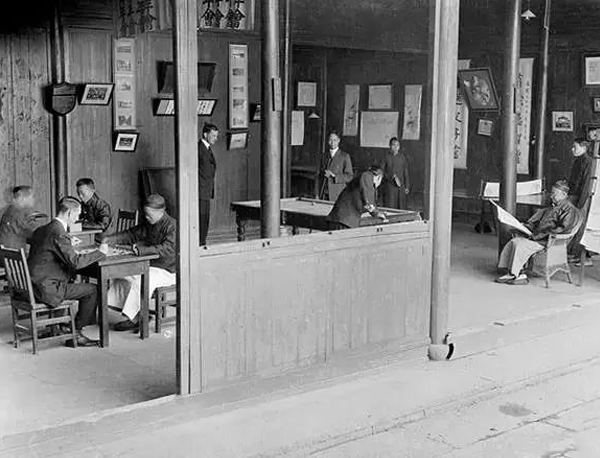Walk into the Academic Building at Duke Kunshan University, and you’re immediately surrounded by light, color and motion.
Maybe it’s the sunlit lobby that grabs your attention. Maybe it’s the colorful couches scattered like confetti, or the ever-changing posters that hint at the campus’s nonstop rhythm.
But if you look just a little longer, you’ll notice something else—something quieter, yet deeply compelling.
Since its founding in 2013, Duke Kunshan has gradually become home to a growing collection of donated artworks from artists across China and around the globe. These pieces line the walls of the Academic Building, infusing the space with creativity, culture and color.
The life of blooming
Step onto the first floor, and you’ll be greeted by a standout piece: “The Life of Blooming,” created and donated by renowned painter Qian Zhou, vice president of the Shanghai Youth Association of Fine Arts and Photography.

At first glance, it’s a rich blend of brushstrokes and hues. But look again. Hidden within the layered textures are Chinese characters that read: “Knowledge in the service of society.” Zhao also wove in shades of blue and green inspired by the DKU logo, letting the spirit of the place shape every stroke as she painted the work right here on campus.
Blending East and West, she employed traditional ink-wash methods, typically used on xuan paper, but applied them to Western-style oil canvas—a cross-cultural experiment that mirrors DKU’s identity.
Along with “The Life of Blooming,” Zhou donated usage rights to more than 30 of her works, all echoing her belief in harmony between tradition and innovation.

Born and raised in Shanghai, Zhou grew up under the influence of her father, a calligrapher. She began studying Chinese calligraphy and painting as a child. In 1999, she graduated from the Nanyang Academy of Fine Arts in Singapore and later continued her studies in Europe, Beijing and Shanghai. She now serves as a resident visual artist at the Sturm College of Law, University of Denver.
A glimpse into China’s past
Keep walking along the first-floor corridor, and you’ll come across another kind of artwork—a wall of black-and-white photographs that feels like stepping into a time machine.

These images are part of a rare photographic archive associated with Catherine Gamble Curran (1926–2007), an American born in Beijing to parents deeply involved in China. Her father, Sydney D. Gamble (1890-1968), was a sociologist, renowned China scholar and grandson of Procter & Gamble co-founder James Gamble.

As an avid amateur photographer, he began taking pictures in China during his first trip to the country with his family in 1908. Between 1917 and 1932, Gamble returned three more times and continued capturing the daily life of Chinese citizens. He traveled throughout the country to collect data for social surveys and to photograph urban and rural life, festivals, architecture and everyday people. His work preserved a vivid visual archive of a country undergoing profound change in the early 20th century, a period marked by political awakening and social reform in China.
It wasn’t until 1984, 15 years after his death, that his daughter Catherine found out his legacy. At an event hosted by the Princeton Asia Society, she viewed a slideshow of hauntingly beautiful images, only to realize they had all been taken by her father.
Inspired, she returned home to New York and unearthed a rosewood box in the attic. Inside were thousands of precious frames capturing early 20th-century life in China.






In 2006, the Gamble family donated the entire collection, 5,000 images, to Duke University Libraries. The traveling exhibition in China started in June 2013. It has been on display in six museums and libraries in Beijing and Shanghai and is now housed at Duke Kunshan University. Thus, Duke University’s “China through Sidney Gamble’s Camera” finds its permanent home in China.
Scenery
Turn the corner, and you’ll encounter the expressive oil paintings of Ruowang Liu, a Shaanxi-born artist whose work explores human nature, myth and memory.

In 2017, Liu donated 23 pieces to DKU. His “Scenery” captures dreamlike vistas using textured strokes and layered colors. Each is edged with 23-karat gold and personally signed, making the collection both collectible and compelling.

His work has been shown in cities such as Beijing, Shanghai, Singapore, Seoul, Queenstown and Venice. He received the Naples Cultural Award in 2015 and the NordArt Audience First Prize in 2016.

Mediterranean corner
Head upstairs near the second-floor elevator, and you’ll find six bold oil paintings by Alfred Milot Mirashi, an Albanian-born, Italy-based artist.

Donated in 2017, the six oil paintings—each measuring 120 by 100 centimeters—burst with energy and layered symbolism. The colors are vivid, and the compositions dynamic. Within each canvas is a convergence of cultures: Albanian roots, Italian elegance and global ideas shaped through years of international exchange.

Born in 1969, Mirashi earned his diploma in painting from the Brera Academy of Fine Arts in Milan in 1999. He won a “Socrates Erasmus” scholarship to attend a course at the Loughborough University of Arts & Design in England. He lives and works in Florence.

Untitled
Tucked around another corner is the work of Haitao Zhao, an artist who treats painting as a way of life.

In 2017, he donated three pieces of his work to DKU. Each canvas, some as large as 200 centimeters wide, is a storm of color and movement. They don’t instruct; they invite. Each work feels like a personal release—untethered, unfiltered and deeply human.

Zhao’s abstract works ask viewers to step inside, not to decode but to feel. In a world that often demands logic, his art makes space for the raw and the unknowable.


